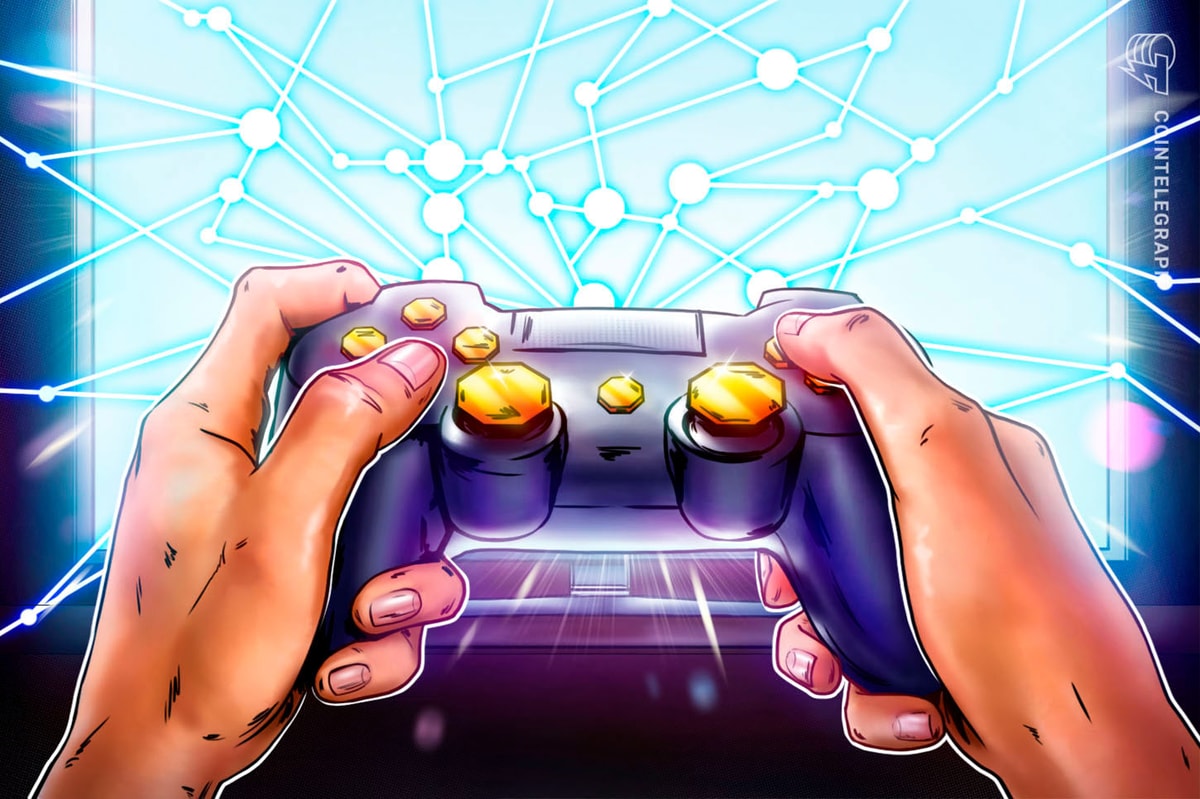Play-To-Earn (P2E) gaming, once blockchain gaming’s most promising format, is currently suffering a crisis of confidence.
The rise of the P2E space is due to a convergence of many different trends. Cryptocurrencies exploded in popularity in the early 2020s. With their presence in the mainstream, many players entered what had previously felt like the Wild West. The corresponding rise of NFT gave the space the technology to push earning and collectibility in new directions.
DeFi platforms have also increased the utility of in-game currencies and items, as they can be traded and used outside of the game. But today, P2E currently looks to be in a very bad way.
Some of the industry’s brightest stars are in seriously bad health. Axie Infinity, for a long time the world’s most popular P2E title, is one such example. According to ActivePlayer.io, the last 30 days have only seen approximately 430,000 players. Which represents the game’s worst month since October 2020. The game’s native token is also down approximately 93% from its all-time high in August 2020.

Play-To-Earns Look Like Ponzinomics, Say Critics
One of the space’s fundamental problems is that many P2E players logged in to make money. When the likelihood of good returns evaporated, so did many of the players. When you remove the earning potential, many games aren’t that fun, either.
Damian Bartlett, the Team Lead for W3E, the world’s first Web3 LAN gaming tournament, wants to see good blockchain-based games that offer the same quality experience as their Web2 predecessors. “I see many players align with my own views. We want fun games and the ability to own our own assets that we would buy anyway on our favorite traditional games. P2E has made speculative assets the focus, and the game itself is often a secondary priority. Many of these games DAO’s and therefore proposal votes are dominated by the will of a few whales. Not the majority of the players. It just causes of a cycle of everything being about money and the cryptocurrencies tied to the games.”
“A good Web3 game will simply be a fun game that people are playing regardless of assets, some NFT assets they can buy if they choose to and the ability to buy in and sell out without the complications of unstable game currencies devaluing everything.”
However, perhaps the industry’s fatal floor was the format itself. Many P2E titles are structured in ways that resemble colorful, fun-for-a-moment Ponzi schemes. (A Ponzi scheme collapses when the operator is no longer able to attract enough new investors to pay returns to existing investors or when too many investors try to cash out at once.)
The Industry Wants a More Sustainable Model
Frank Ma, CEO of Ultiverse, is one person who believes the format was doomed from the start. “It is not based on a legitimate business model, but rather on the constant recruitment of new investors. The scheme does not generate returns through any sort of productive activity, but rather through the contributions of new investors. It is a zero-sum game, where the gains of early investors are coming from the losses of later investors. So, it ultimately collapses, leaving the majority of investors with significant financial losses.”
For the industry to continue to grow beyond Play-To-Earn, Ma believes there are a few obvious priorities. Education is one of them. There are not enough “old school” gamers who are familiar with Web3 or blockchain technology. And when they are, the technology’s benefits are often poorly communicated.
“Offering in-game items or other rewards for engaging with Web3 features could be a powerful motivator for gamers, he says. “For example, offering in-game items that can be traded on a blockchain marketplace could be a way to introduce players to the benefits of Web3.”
Better UI, Please
Another is the widely recognized UI problem. Many Web3 games have a steep learning curve that can be offputting for new players. Finally, says Ma, we need better game integration. “Instead of creating standalone Web3 games, web3 games need to work with web2 studios, IPs, and collaborate.”
Players are catching on to the fundamental weakness of many Play-to-Earn titles. Whilst those who quit their jobs have discovered they may have made a mistake, Web3 community members who played for other reasons have grown tired of defending a defenseless system.
That widespread disillusion means players are looking for better titles. That migration is likely to lead to better in-game economics and playability. “The overall web3 gaming industry has gravitated towards a sustainable in-game economy,” says Boyang Wang, founder of P12, a Web3 gaming infrastructure project that aims to make game creation accessible and the game economy sustainable.
As web3 gamers become more educated about its flaws, ponzi-like Play-to-Earn models are no longer as captivating. “P2E, therefore, tends to be increasingly unpersuasive to gamers since the source of financial gain from gameplay is undefined, and loss can be exponential upon collapse.”
Blockchain Gaming Is Still Growing
2022 was arguably Web3’s worst year to date. The market crashes and famous cases of bad behavior put much of the industry on the back foot. During its rise into the mainstream, a lot of the Crypto ecosystem had forgotten how to defend itself, so when the repeated crises hit, a lot of the industry was blindsided.
Blockchain gaming largely has largely avoided the worst of the criticism. In 2022, according to DappRadar, gaming made up almost half of the on-chain activity. Whether that continues to grow in 2023 depends on one big question: can Web3 make great games?
Disclaimer
All the information contained on our website is published in good faith and for general information purposes only. Any action the reader takes upon the information found on our website is strictly at their own risk.
Read More: news.google.com









 Bitcoin
Bitcoin  Ethereum
Ethereum  Tether
Tether  XRP
XRP  Solana
Solana  USDC
USDC  Dogecoin
Dogecoin  Cardano
Cardano  TRON
TRON  Lido Staked Ether
Lido Staked Ether  Wrapped Bitcoin
Wrapped Bitcoin  LEO Token
LEO Token  Avalanche
Avalanche  Chainlink
Chainlink  Stellar
Stellar  Sui
Sui  Hedera
Hedera  Shiba Inu
Shiba Inu  Toncoin
Toncoin  USDS
USDS  Wrapped stETH
Wrapped stETH  Bitcoin Cash
Bitcoin Cash  MANTRA
MANTRA  Litecoin
Litecoin  Polkadot
Polkadot  Hyperliquid
Hyperliquid  Bitget Token
Bitget Token  Binance Bridged USDT (BNB Smart Chain)
Binance Bridged USDT (BNB Smart Chain)  Pi Network
Pi Network  Ethena USDe
Ethena USDe  WETH
WETH  WhiteBIT Coin
WhiteBIT Coin  Monero
Monero  Wrapped eETH
Wrapped eETH  Uniswap
Uniswap  OKB
OKB  Aptos
Aptos  Dai
Dai  Coinbase Wrapped BTC
Coinbase Wrapped BTC  Pepe
Pepe  Ondo
Ondo  Gate
Gate  Tokenize Xchange
Tokenize Xchange  NEAR Protocol
NEAR Protocol  Internet Computer
Internet Computer  sUSDS
sUSDS  Cronos
Cronos  BlackRock USD Institutional Digital Liquidity Fund
BlackRock USD Institutional Digital Liquidity Fund  Mantle
Mantle